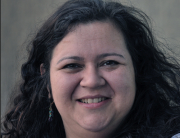I went to Ottawa a few weeks back and spoke on Bill S-2 to the House of Commons Standing Committee on the Status of Women. It was a very interesting experience.
First, it was interesting to figure out what I wanted to say. I’m the sort that likes to be constructive. I don’t want to formulate my position based on who is advancing it, and if it’s not great legislation but likely to go through I think it is important to try to improve it if possible. I also like to speak from personal experience because it is a position of strength based on knowledge and it’s pretty hard to detract from. I’m pragmatic I guess. I should also stress that I’m not a lawyer.
So Bill S 2 is about providing matrimonial law on reserves and the most controversial aspect is how to divide up the marital assets (primarily the home) if families split up. Right now many First Nation women are forced to leave the home because it rests with the member who is most often the man in the marriage. If it were off reserve things get split evenly – but usually the one who raises the kids stay in the home. But these laws don’t apply – so the idea is to allow FN’s to write their own laws, and if they don’t within a year, the provincial law would apply.
I have experience with both law development and negotiating integration with provincial systems through tripartite negotiations. My analysis is as follows:
– This is yet another federal priority imposed on First Nations who have a myriad of other issues to deal with including delivering services without enough resources, reporting, and any other variety of different issues such as economic development etc.
– This law needs other jurisdiction to make it work (land management, ownership, membership are some that occur to me) so in isolation makes it stranded in my opinion. Tsawwassen created 23 laws to replace the Indian Act.
– First Nations have limited resources to put towards law making – and this law might not be a community priority and the community will have to approve it.
– If provincial laws apply at the end of the year – can the provincial law accommodate Indian Act legal instruments (i.e. certificate of possession) or the lack of ownership records some First Nations may suffer from? I suspect not. In Tsawwassen First Nation’s case – we spent years in complex negotiations modifying provincial systems (court and land registry as some examples) to ensure the provincial systems accommodated the aboriginal nature of our government and instruments.
– Can First Nations women access the justice system even if it is working? Most likely not many.
– So what may seem like a good premise is actually very difficult to implement. So at the end of the day it is unlikely that this legislation would have the impact that was intended for it.
I also briefly spoke about the federal government’s approach to First Nation’s issues generally, their approach to consultation and their top down approach and how it doesn’t work in my experience. I think the government has a huge opportunity to make changes on First Nation reserves with willing First Nations – all it would take would be some collaboration.
The link to my testimony: http://www.parl.gc.ca/HousePublications/Publication.aspx?DocId=6123767&Language=E&Mode=1#Int-7995074







